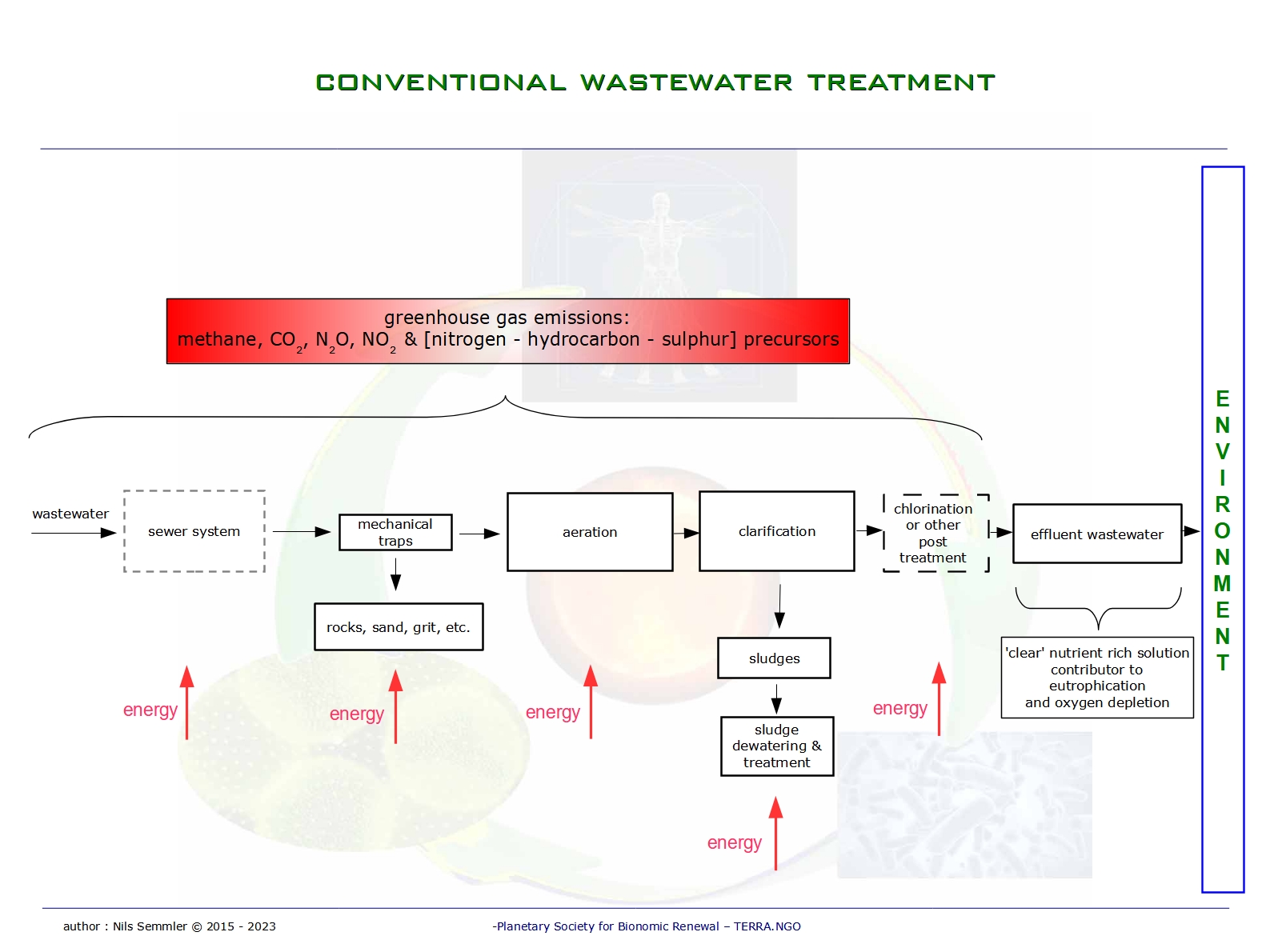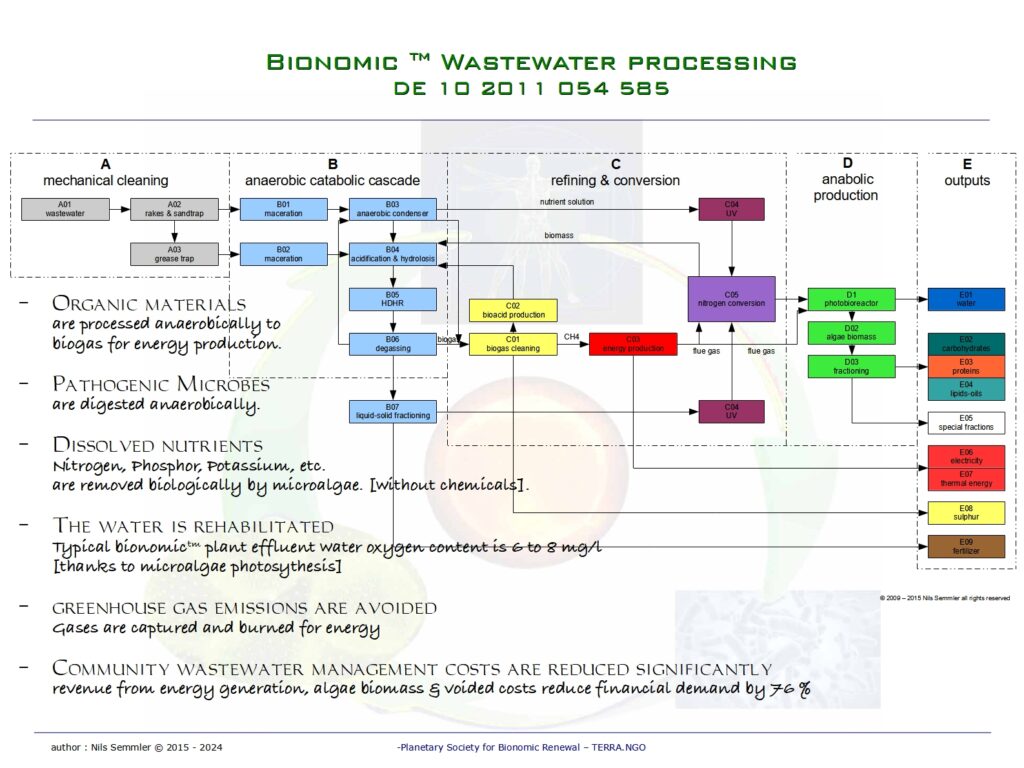From wastewater treatment to full resource recovery
There appears to be some confusion what exactly the differences are between bionomictm wastewater processing and wastewater treatment.
Basic Differences:
Wastewater treatment only addresses the following basic parameters:
- elimination of pathogens
- elimination of odors
- clarification – removal of suspended particles
- reduction of dissolved nutrients to meet government guidelines
Wastewater treatment as shown below has been around for a long time. It was significantly advanced by the Engineer Karl Imhoff over a hundred years ago. Karl Imhoff published an incredible amount of patents on the subject, some of which are still relevant today. You may want to read our Imhoff Paper for more information.

You will note that all steps require energy input and most are rather energy hungry. The most energy hungry is the forced aeration in the third step to force-feed aerobic microbes.
As an example of aeration costs I can mention an evaluation done on the wastewater treatment facilities of Trujillo in the Northern part of Peru in 2005, which at the time quoted a monthly energy cost of 50,000 USD just for aeration!
In addition, from an environmental perspective, due to the forced aerobic process a number of Greenhouse gases are either discharged directly or as precursors.
The large volume of air in aeration not only promotes growth of aerobic microbes that decompose organic carbon based compounds, but also vaporizes a significant amount of miniscule Carbon compounds – primarily raw excrement.
In the case of the city of Mexico those ‘miniscule’ particles made up roughly 13 metric tons daily in 2005.
This in addition to various chemicals that come into play for reduction of dissolved nutrients, which nature has to deal with downstream of the treatment plant.
When the treatment is well designed and in accordance with the volumes of incoming waters It does achieve its objectives as stated in the four points above but does not deal with nature’s downstream biological problems caused by dissolved nutrients, biological oxygen demand (BOD) or other dissolved chemicals used in the treatment process. Nor does treatment realize significant economic value from the raw materials contained in the effluent.
The raw material content and their value, particularly their energy content is typically ignored in conventional treatment technology. Only in cases where the treatment plant has a digester installed for partial processing of the accumulated sludges is some of the energy potential captured for use in the plant.
Overall the energy as well as operational cost balance is negative and funding has to be by means of user fees or government subsidies which translate into tax dollars.
This negative economic balance is hard to deal with for small communities and developing nations. The result are discharges of raw sewage into the environment. Time before impacting the fresh water table and subterran aquifers can be calculated.
In addition depending on design parameters we may also find that storm waters will have an undesired effect on treatment and may cause overflows of raw sewage.
Bionomic processing of municipal wastewater and resource recovery
In contrast, using bionomictm processing techniques for resource recovery, technologies and methods as published in 2011, we meet and exceed the four points mentioned above as well as capture the intrinsic resource value of the raw materials contained in the wastewater stream.
Bionomictm Processing we achieve economic value streams including renewable fuels & energy:
- biogas for electrical & thermal energy generation
- oils from the algae used in the tertiary polishing step for fuel production
To a lesser extent we also produce stable fertilizer and specialty fractions such asa sulphur.
We achieve a dramatic reduction of operational costs in Northern climates and even a positive energy and economic balance in Southern climates.
From an environmental perspective bionomic wastewater processing achieves the following:
- the miniscule Carbon particles are no longer emitted. No more feces in the atmosphere.
- Greenhouse gas as well as precursor emissions are voided.
- No chemicals required for reducing dissolved nutrient content.
- The water is rehabilitated prior to discharge. It shows an oxygen content of 6mg/l.
- Zero B.O.D.
- Positive impact on downstream life and biodiversity.

Find out more how your community can benefit from bionomictm wastewater processing by writing us. contact[at]terra.ngo or use our contact form.
With over twenty years of experience we are here for you and will help you find the best solution for your community.